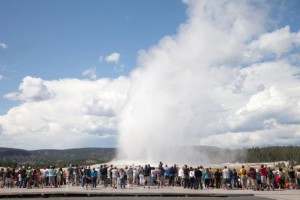Source: nationalgeographic.com
Published: March 29, 2016

Photograph by beth trudeau/shutterstock
Subaru offers steps everyone can take on a zero-landfill path to keep our National Parks pristine.
This year’s National Park Service centennial marks a time to celebrate a century of stewardship in more than 400 natural, historical, and cultural parklands in the United States. And as we all prepare to get outside and explore our country’s parks on National Take a Walk in the Park Day (March 30), we need to be mindful that to keep our parks pristine for the next 100 years, we all have a role to play. That’s where Subaru can help. Subaru of America, Inc. offers practical steps for preserving parks drawn from research the automaker commissioned to study responsible tourism practices in Denali, Yosemite, and Grand Teton.
Fast Tracks
More than 270 million people visit America’s national parks each year. While these excursions produce thrilling encounters with nature, they also generate some 100 million pounds of trash, most of it headed straight for landfills. Drawing on its expertise in environmental stewardship as America’s first zero-landfill automaker, with all waste recycled or reused since 2004, Subaru launched an innovative program to test waste-reduction and zero-landfill practices in three national parks—Yosemite (in California), Grand Teton (in Wyoming), and Denali (in Alaska)—that collectively generate millions of pounds of waste each year.
Reducing Footprints
Subaru’s online environment hub features Who We Are is What We Leave Behind, a documentary webseries tracking the progress of the Subaru-National Park Zero-Landfill Initiative. The series explores recycling-related issues to show how proactive measures helped the automaker preserve natural resources. The website lists a number of everyday ways to reduce environmental impact before leaving home, on a day trip, camping, or staying in a park hotel.
Using refillable coffee cups, for instance, eliminates considerable waste, since the wax linings in most paper cups can render them unrecyclable. Shopping for snacks in compostable or reusable packaging is an environmental best practice. Opting for digital versions of park maps puts essential information at your fingertips while saving a ton of paper waste. A few additional practical and sustainable tips for visitors:
- Carry reusable water bottles and plastic bags
- Avoid disposable utensils and single-serving containers
- Recycle waste in cities before or after visiting parks
- Do not burn waste in campfires
- Use air dryers, not paper towels, in restrooms
- Support park composting efforts and separate waste items before discarding
A parallel practice to reducing waste is redirecting (or diverting) materials away from landfills and toward recycling centers. “Waste is a material that hasn’t found its use yet. So you just have to find a use for it,” says Denise Coogan, a Subaru environmental and safety manager who helped kickstart the automaker’s zero-landfill initiative by diverting garbage from waste sites to recycling hubs. “We started by dumpster diving,” she says.
The visitors who come to the parks can help by recycling, reducing what they bring in, and re-using things… It doesn’t take a whole lot, but if everyone just makes that little extra effort, they can make a huge improvement.
Denise Coogan , Subaru Environmental and Safety Manager
On the Right Path
In an educational partnership geared for families, Subaru and National Geographic teamed up to produce Find Your Park, Love Your Park projects and ideas to get students excited about parks. Timed in celebration of the National Park Service centennial, the program features hands-on classroom activities, such as exploring ways that people’s actions can negatively affect natural places, and then considering solutions to these problems. These activities are designed to inspire kids to get outdoors and engage with the wild while supporting environmental best practices., a program of
National Take a Walk in a Park Day is a chance for everyone to get out and explore the wonders of our natural heritage. But our National Parks are built for everyday discoveries, year after year. Embracing practical steps for keeping our parks clean will ensure that our legacy is one of enhancing our wilderness areas and preserving them for generations of visitors to come.
Learn more about Subaru’s National Park Zero-Landfill initiative and best practices for visiting parks here.
